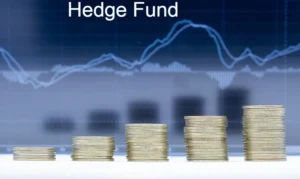Meaning of share split:
A share split is a method to increase the number of outstanding shares through a proportional reduction in the par value of the share.
This affects only the par value and the number of outstanding share . Further, the shareholders total funds remain unaltered.
For example
The following is the capital structure of ABC & Company:
| ₹ | |
| Paid-up share capital (1 crore ₹10 par) | 10 |
| Share premium | 15 |
| Reserves & surplus | 8 |
| Total net worth | 33 |
ABC & Company split their shares two-for-one. The capitalization of the company after the split is as follows:
| ₹ | |
| Paid-up share capital (2 crore ₹10 par) | 10 |
| Share premium | 15 |
| Reserves & surplus | 8 |
| Total net worth | 33 |
The change will be in the number of shares and the par value of shares.
What are the reason for share split?
The following are reasons for splitting of a firms ordinary shares.
- To make trading in share attractive
- Increase dividend
- Indication of higher future profits
Lets study the reason in detail:
To make trading in share attractive
The main purpose of a stock split is to reduce the market price of the share in order to make it attractive to investor. With reduction in the market price of the share , the shares of the company are placed in a more popular trading range.
For example, If the shares of a company are sold in the lots of 100 shares, of a company are sold in the lots of 100 shares ,it requires ₹10,000 to buy 100 shares selling for ₹100 per share.
A four-for-one split would lower the price to ₹20 per share and the total cost of 100 shares to ₹2000. The wealty investor can still purchase shares of ₹10,000 by acquiring larger number of shares (500 shares at ₹20). But small investor can also afford to buy 100 shares for ₹2000 for which otherwise needed ₹10,000 before split.
Thus the reduction in the market price caused by the split , motivates more investors. Particularly those with small savings, to purchase the shares. This helps in increasing the marketability and liquidity of a company’s shares.
Increase dividend
When the shares is split , seldom does a company reduce or increase the cash dividend per share proportionately. However, the total dividends of a shareholder increase after a split.
For example, a company may be paying a cash dividend of ₹3 per share before the split. But after a split of three-for-one , the company may pay a cash dividend of ₹1.50 per share. A shareholder holding 100 shares before the split will receive a total cash dividend of ₹300. The number of shares owned by the shareholder will increase to 300 after the split . And his total cash dividend will be ₹450. The increase dividend may favorably affect the after-split market price of the share. It should be noted that the share split per se has no effect on the market price of share.
Indication of higher future profits
The share splits are used by the company management to communicate to investors that the company is expected to earn higher profits in future . The market price of high-growth firm’s shares increase very fast . If the shares are not split periodically , they fall outside the popular trading ranges.
Therefore , these companies resort to share splits from time to time. The share split like bonus share has an informational value that the firm is expected to perform efficiently and profitably, and that the shares have been split to avaoid future high price per share.




[…] Refer: https://taxandfinanceguide.com/share-split/ […]